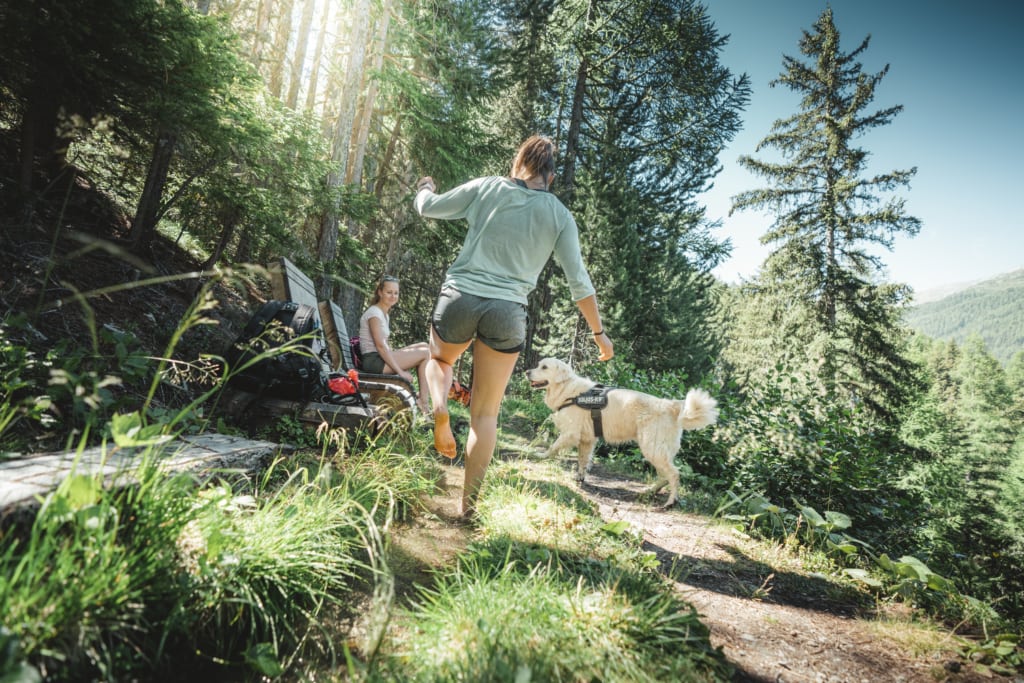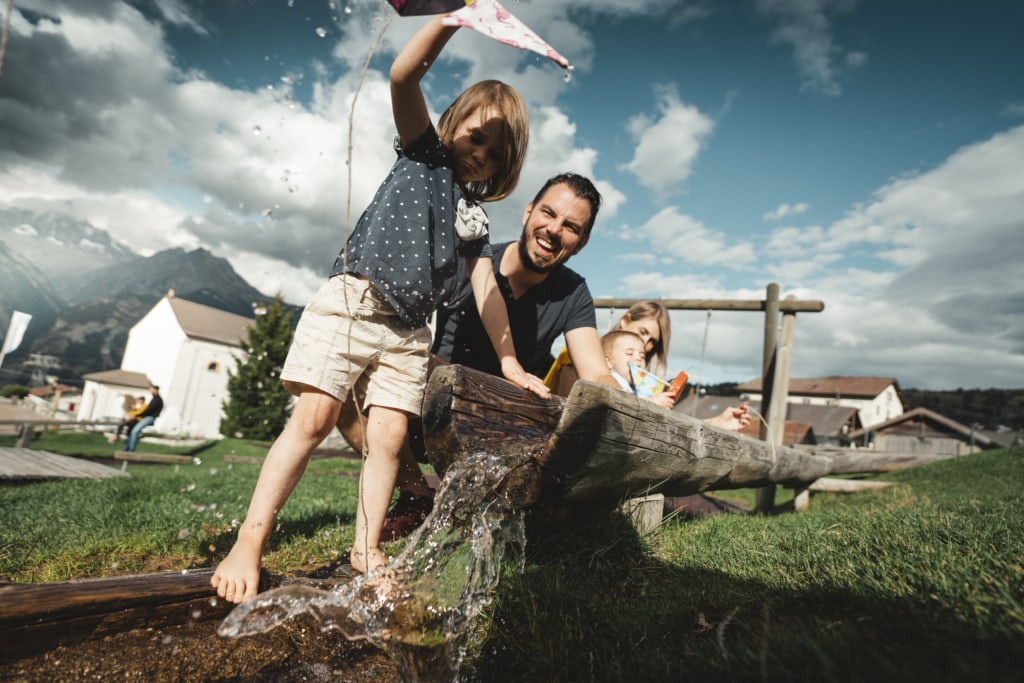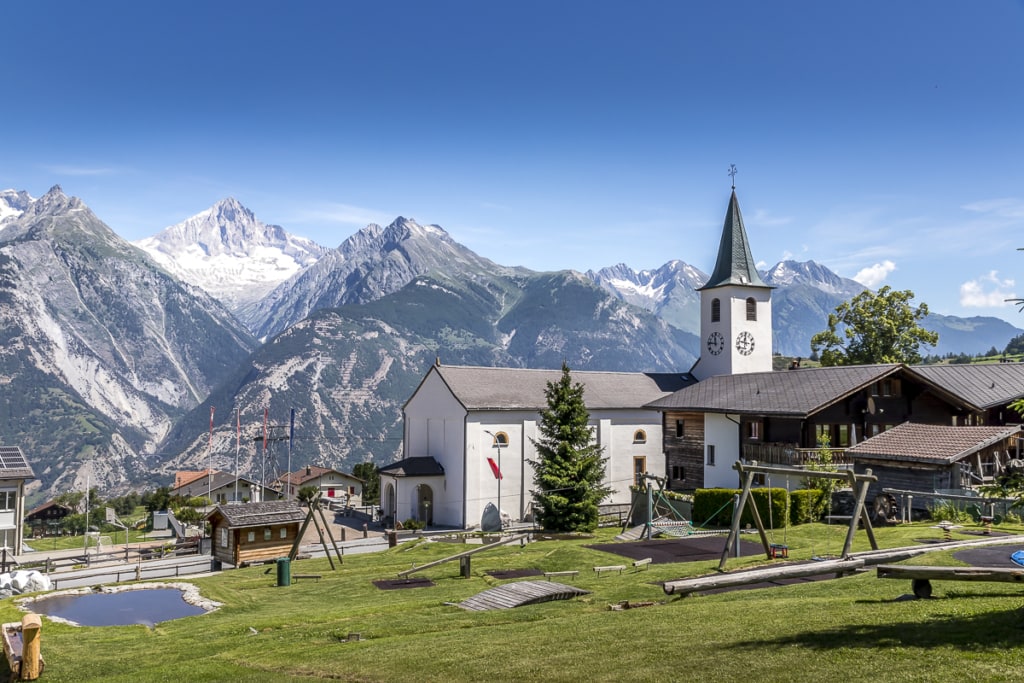HISTORIC WATERWAYS
SUONS
The foremost part of the Vispertal valley is the driest region in Switzerland. At the measuring point Ackersand below Törbel, the average annual precipitation is 520 litres per square metre. The high mountains all around force the clouds to dump their moisture onto the peaks and passes – and the Valais valley floor usually ends up empty. By comparison, just under forty kilometres from Ackersand – in Mönchsjoch – more than 3,500 litres of precipitation are measured annually. This means the parts of the Valais valleys that cannot be irrigated are unable to be used for agriculture. And since the sunny terraces are not to be found on the valley floors, but on the balconies outside, the people of Valais have had to ‘fetch’ the water in the narrow, steep valleys at the end of the glaciers ever since they cleared and settled in the long Rhone valley. The oldest water pipe in Valais was discovered a few years ago in an archaeological dig during motorway construction in the Pfynwald forest. It dates back to Roman times.
The lack of precipitation is accompanied by constant winds which dry out the ground. From mid-April to September, meadows, vines and fields must therefore be irrigated in order to harvest anything at all. In perilously balanced wooden ‘gutters’, medieval builders overcame vertical rock faces with the gentlest possible incline, to avoid losing any water. It was not unusual for men to fall to their deaths. In this way, they atoned for misdeeds committed in the village – inspiring the name ‘Suon’, which comes from the German ‘Sühne’, or ‘atonement’. Over the centuries, an extensive network of thousands of kilometres developed across the whole of Valais, branching out from the tributaries via the ‘Suons’ into increasingly narrow waterways reaching every piece of cultivated land.
SUON HIKES
In Unterbäch, idyllic hiking trails wind their way along three preserved Suon waterways: the Haltsuon, the Alte Suon and the Meigger Suon. A wild and romantic hike accompanied by the sound of their rushing waters is a must for anyone who loves culture and the great outdoors.
SUONEN- AND SUDELPARK
Unterbäch even has its own park dedicated to these special waterways, the Suonen- and Sudelpark. Here, the different elements of the irrigation system have been built in model form. Except for the water catchment in the stream – the Aschepfi, or siphoning – all aspects of a Suon waterway have been put in place: the sand trap eliminating excess fine sand from the ‘glacier milk’, the mallet (announcing hammer) that knocks while the water flows, the lock to divert the water, gutters, some of which are hung as aqueducts, the guard’s hut where the Suon guards used to live, the Sunday pond, the one part of the water that was not allowed to be used on the Lord’s day, the wayside shrine, where people asked God’s blessing as they passed, and the ‘zett water’ pipe, where the excess water was returned to the stream or another pipe.
COMMUNITY ASSOCIATION
A community association is responsible for maintaining the Suonen- and Sudelpark. New members are always welcome to join the community. Membership can be acquired through the one-time purchase of a Tässla (wooden membership card) for CHF 100.00 per person, or CHF 75.00 per person for couples. Taking part in at least one of the two volunteering days in Unterbäch is considered the equivalent of a recurring annual fee.



